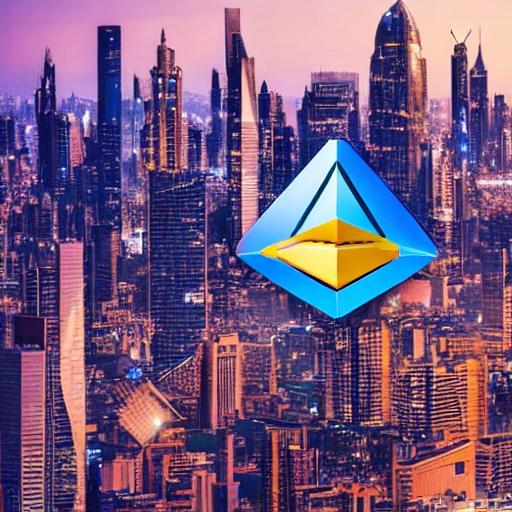Ethereum, the world’s second-largest cryptocurrency by market capitalization, has come a long way since its inception in 2015. Born out of the imaginative mind of Vitalik Buterin, Ethereum has revolutionized the world of blockchain technology and has become a driving force behind the decentralized applications (dApps) revolution.

Unlike Bitcoin, Ethereum is not only a digital currency but also a decentralized platform that enables developers to build and deploy smart contracts and dApps. This unique feature has attracted the attention of individuals, startups, and even Fortune 500 companies alike, who have recognized the immense potential of Ethereum’s blockchain.
One of the major factors that contributed to the rapid adoption of Ethereum was its successful Initial Coin Offering (ICO) in 2014. By offering the Ether (ETH) token to investors, Ethereum managed to secure the funds necessary to support the development of its platform. The ICO model introduced by Ethereum has since become a popular fundraising method for countless blockchain projects.
Another significant milestone in Ethereum’s adoption was the creation of the Enterprise Ethereum Alliance (EEA) in 2017. The EEA brought together a group of major global companies, including Microsoft, J.P. Morgan, Intel, and more, to collaborate on advancing Ethereum-based solutions. This partnership not only enhanced Ethereum’s credibility but also fostered the development of countless enterprise-grade blockchain applications.
Furthermore, Ethereum’s developer-friendly architecture played a crucial role in its adoption. Developers worldwide embraced the platform due to its robustness, security, and flexibility. Ethereum’s programming language, Solidity, provides a familiar environment for developers to write smart contracts, making it easier for them to build decentralized applications on the network.
As Ethereum gained popularity, its blockchain ecosystem flourished. Thousands of dApps were developed, covering a wide range of industries such as decentralized finance (DeFi), gaming, supply chain management, identity verification, and more. These applications leveraged Ethereum’s smart contracts to provide secure and transparent functionalities that traditional centralized systems couldn’t offer.
With its widespread adoption, Ethereum also faced scaling challenges as it struggled to handle the increasing number of transactions. To tackle this issue, Ethereum has been working on an upgrade called Ethereum 2.0, or ETH2, which aims to improve scalability, security, and sustainability. This upgrade will transition the network to a proof-of-stake consensus mechanism, ensuring a more efficient and environmentally friendly blockchain.
Today, Ethereum continues to grow, attracting investments and partnerships from major players in the tech industry. Its ecosystem is expanding rapidly, with more developers, businesses, and individuals building and using Ethereum-based applications. The decentralized finance sector, in particular, has boomed on the Ethereum network, with billions of dollars locked in various DeFi protocols.
As Ethereum’s adoption evolves, it is clear that the platform has played a pivotal role in shaping the future of programmable blockchains and decentralized applications. Its impact on the technology world cannot be underestimated, and as it continues to innovate and overcome challenges, Ethereum has the potential to revolutionize industries and empower millions worldwide.
